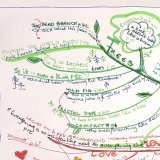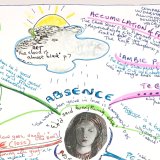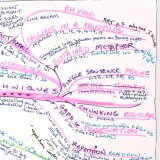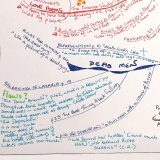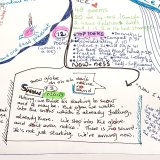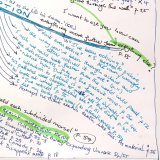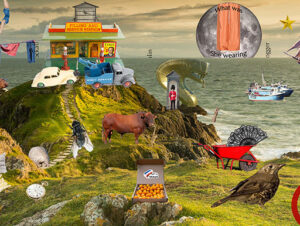Helena Nelson tries a different way of reviewing Absence by Ali Lewis (Cheerio, 2024)
A long time ago I fell for Tony Buzan’s ideas about mind-mapping. I believe this diagrammatic approach helps some people (I’m one of them) to sort out their thoughts. It proves useful to me when working on a review. Usually I get so far with the map and then abandon it to start writing, often drawing my main focus from just one branch of the drawing. So for Ali Lewis’s Absence, I began a mindmap, but in this case, I didn’t stop. I also wrote all over the book itself. Look.
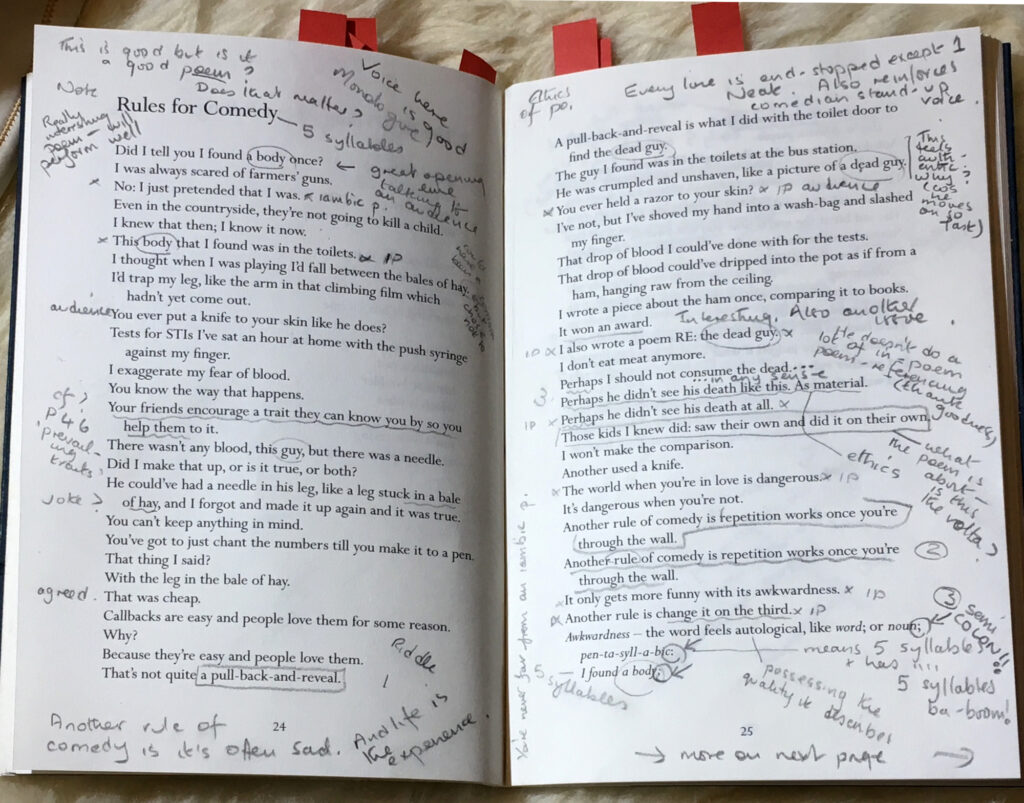
For the mindmap (see below) I started in the middle of a horizontal rectangular sheet (A3) with a thumb-sized cut-out face of a woman. She’s Lizzie Siddal, painted by Dante Gabriel Rossetti (her husband). She died in her early thirties, probably at her own hand, of a drugs overdose. But she’s at the centre because ‘Last Meal’, the final poem in Absence, has as its epigraph three lines from Christina Rossetti’s: ‘In an Artist’s Studio’, a sonnet in which she talks about the ubiquitous face of a model on an unnamed artist’s canvases: “Not as she is, but as she fills his dream”. It’s likely that she was thinking about her sister-in-law, Lizzie Siddal. And although Absence has some blurb on the jacket that says it’s “a book about nothing”, to me it is about something – even if that something is a real person’s absence and “the end of ten years of love”. Muses are out of fashion, but if they were back in, this absent person might qualify for the job. She’s self-sufficient, as all Muses need to be. Maybe she doesn’t look out from all his canvases, but for my money, she affects the way you read most of the poems. [And this is why a mindmap is potent. It just took me nearly two hundred words to say what one image tells me instantly.] Above her head is the book title (ABSENCE) in blue caps.
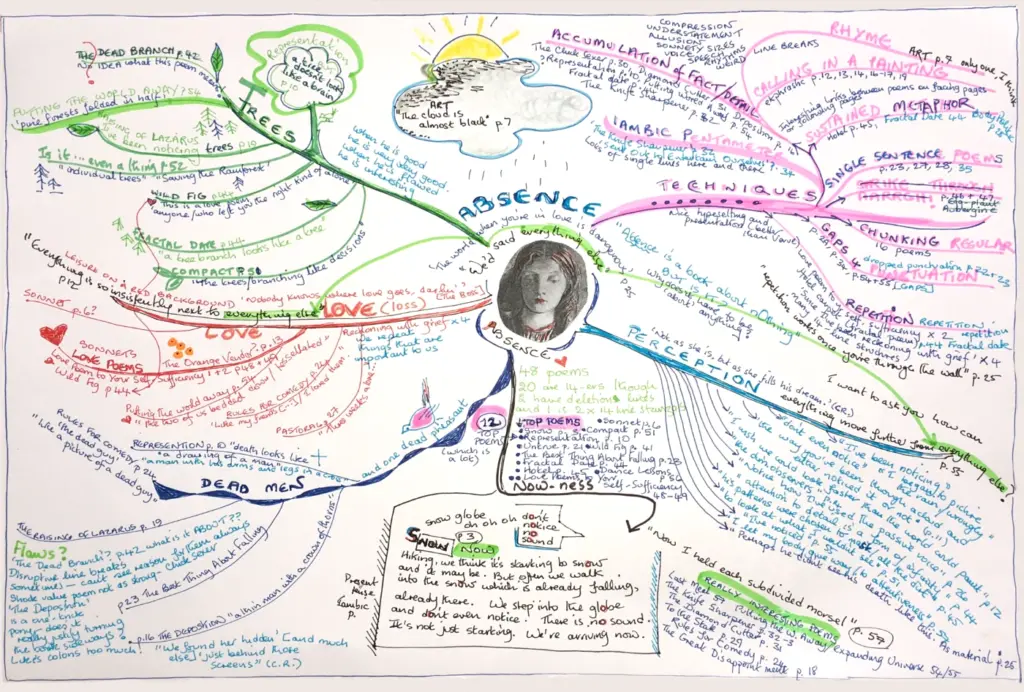
Click on the individual images in the lower gallery to explore the mind map.
There are six thick branches stretching out sideways from the central face, six different colours. Each has a theme written on it in the relevant colour: TECHNIQUES (pink); PERCEPTION (sky blue); DEAD MEN (dark blue); LOVE red; TREES (green); NOWNESS (black). Each branch has sub-branches (twigs?) with tiny writing on or around them, many quotes, numerous page references and small images such as birds, leaves, hearts etc.
At the top of the sheet, between the green (TREES) branch and the pink (TECHNIQUES) branch, there’s a simply drawn grey cloud with a sun behind it and black slashes of rain below. The cloud’s outlined in blue because it belongs with PERCEPTION (blue) which is lower right.
The whole of the six-line poem ‘Snow’ is copied out under the NOWNESS arm at the bottom of the sheet. Above this in tiny writing is a bullet-point list of 12 ‘top poems’ from the book. In the corner beside the DEAD MEN arm, there’s a list of poetic flaws. (‘Top poems’ and ‘flawed poems’ are mere opinion; in a review, I might not even mention them.)
To the far right of the sheet, at the end of the PERCEPTION arm, there’s a quotation [“I want to ask you how can / everything move further from everything else”] linked by a thick green line to another above Lizzie Siddal’s head that reads: “We’d said everything else.” The same green line connects this in turn to a quotation on the left of the red (LOVE) arm: “Everything is so insistently next to everything else.” Which it is. It certainly is.
Helena Nelson is a poet, critic, and publisher, founding editor of HappenStance Press and Sphinx Review, and Consulting Editor at The Friday Poem. Her first collection, Starlight on Water (Rialto, 2003), was a Jerwood / Aldeburgh First Collection winner. Her second was Plot and Counterplot (Shoestring, 2010). She also writes and publishes light verse, including Down With Poetry! (HappenStance, 2016) and Branded (Red Squirrel, 2019). Her most recent collection is PEARLS: The Complete Mr & Mrs Philpott Poems (HappenStance, 2022).

